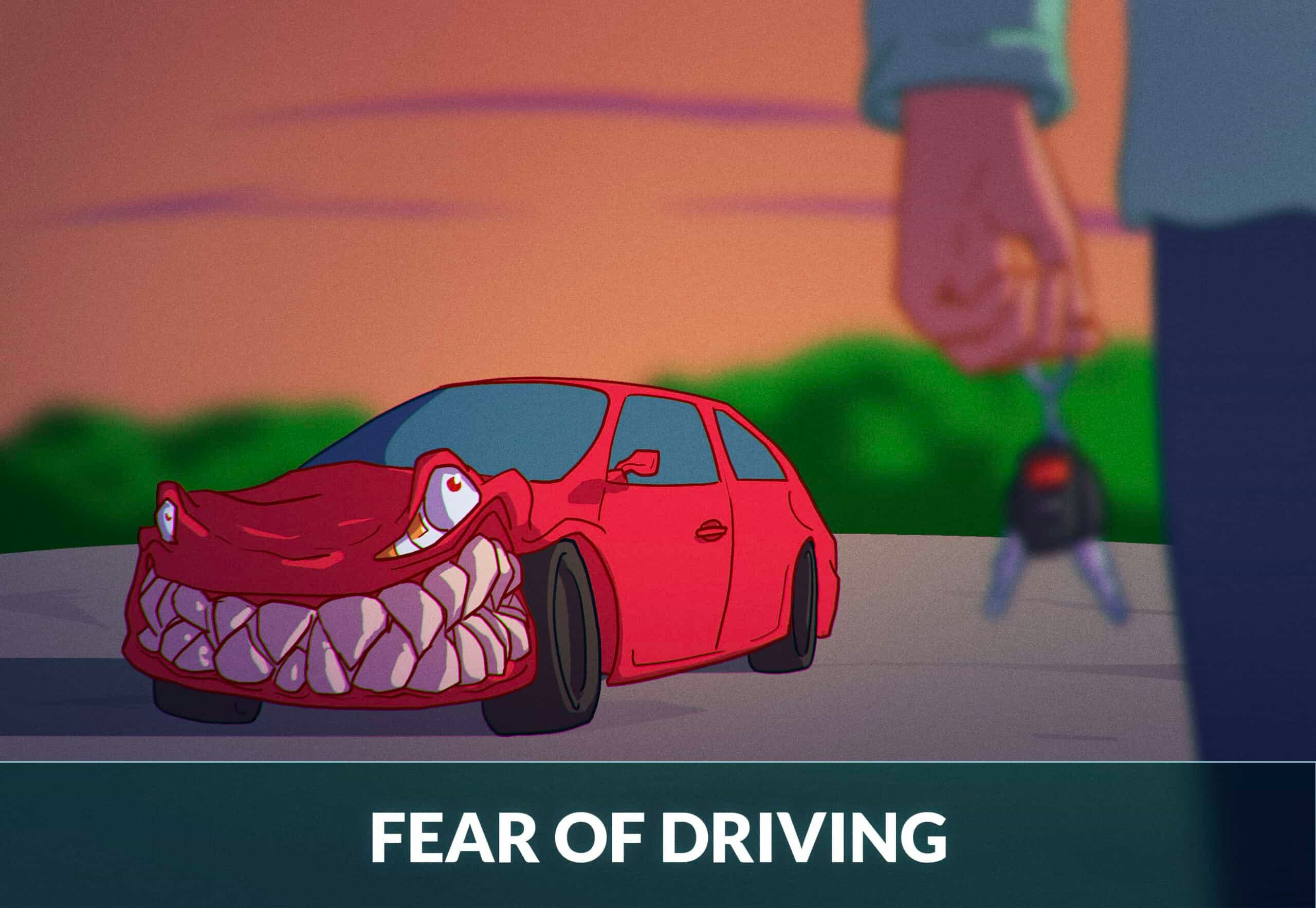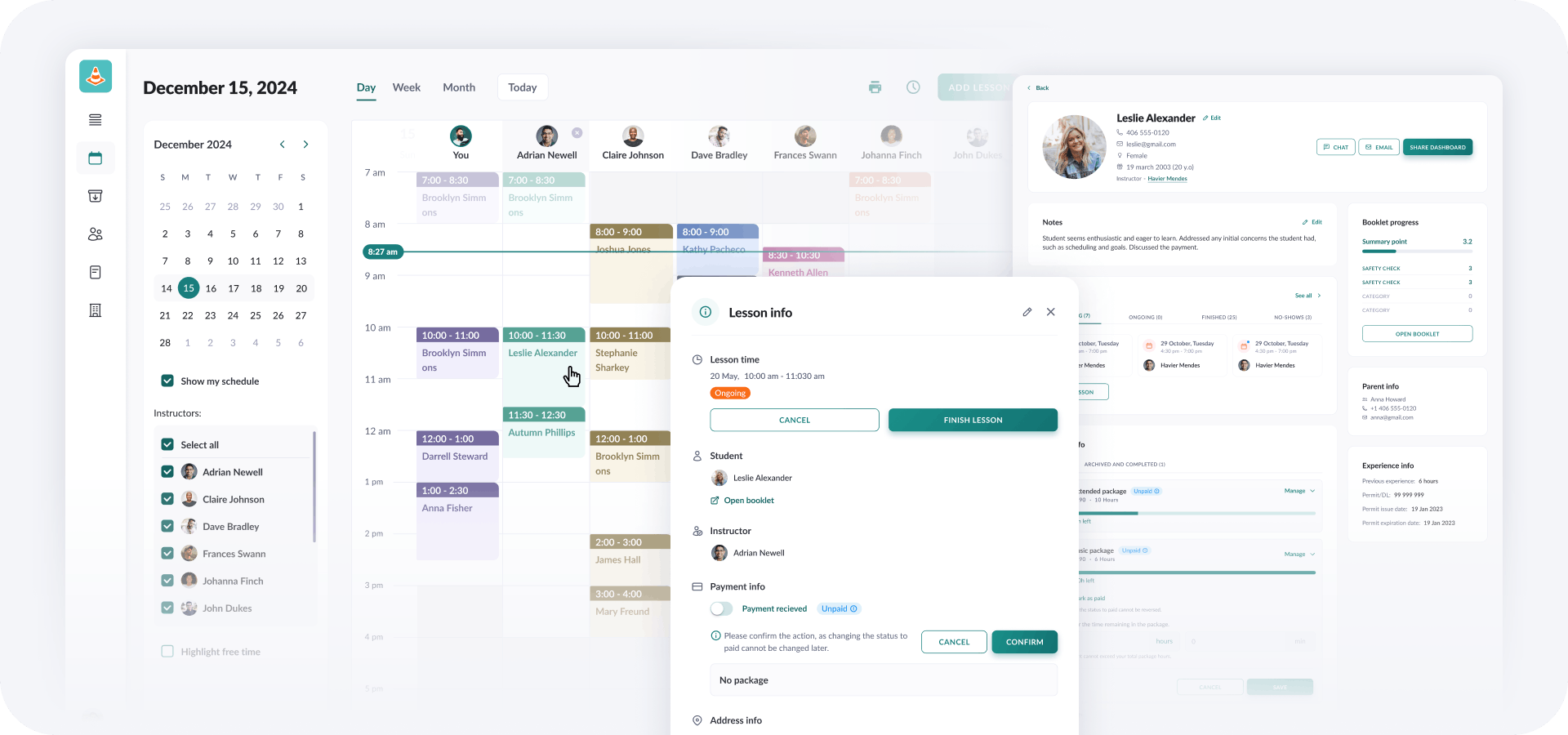
How to Overcome Driving Anxiety
If you’ve ever felt your heart pound at the thought of getting behind the wheel, you’re far from alone. In fact, many people experience driving anxiety – sometimes to the point of avoiding certain roads or even giving up driving altogether.
The good news is that you’re not alone, and there are effective strategies to help you conquer your driving fears. In this article, we’ll explore effective strategies to help reduce driving anxiety and become a more confident driver.
How to Overcome Anxiety While Driving
1. Enroll in Specialized Driving Anxiety Courses
One effective way to tackle driving anxiety is to enroll in specialized courses that focus specifically on overcoming this fear. Many of these courses are available online, offering flexibility and convenience.
- Online driving lessons with professional instructors: Learn from experts who understand driving anxiety and can provide personalized guidance.
- Step-by-step driving guides: Break down complex driving tasks into manageable steps to build your confidence gradually.
- Parent training guides to help with driving lessons at home: If you’re a young driver, these guides can help your parents support you effectively.
- Driving simulations: Practice driving scenarios in a risk-free, virtual environment to get comfortable before hitting the road.
These courses aim to help you get comfortable in a risk-free setting, allowing you to practice and learn without the pressures of real-world traffic. The benefits include increased confidence, improved driving skills, and a structured approach to facing and overcoming your fears.
2. Get help from a skilled driving instructor
If you have severe anxiety, consider gradual exposure therapy with an understanding instructor. This structured approach involves listing out feared driving tasks, from the least scary to the most daunting, and tackling them step by step. Over time, your brain will learn that driving situations are safer than they may feel, which can greatly reduce panic behind the wheel.
For most others, hiring a professional driving instructor is an excellent way to gain confidence and reduce anxiety. Not only do they teach you the most current rules and best practices, but they also guide you through challenging scenarios in a supportive, controlled environment. With each lesson, you’ll build the knowledge and experience needed to feel at ease.
Even if you already have a license, refresher lessons with an experienced instructor can help you unlearn bad habits, stay up to date on driving regulations, and reestablish your comfort level – especially if you haven’t driven for a while.
3. Learn the rules of the road by heart
Knowing the rules of the road inside and out is essential for building confidence behind the wheel. When you truly understand traffic laws and anticipate how other drivers will behave, you’ll feel far more comfortable in traffic. One common pitfall for new drivers is studying just enough to pass the permit test, rather than mastering the practical knowledge needed for long-term road safety.
Think of it as the base of a pyramid. A strong, well-studied foundation will support every skill you build on top of it. That way, when you’re out on the road, you won’t have to think about them, they’ll just be second nature.
Thoroughly learning safe driving techniques dramatically decreases your risk of accidents and uncomfortable situations, which in turn helps reduce anxiety. For instance, maintaining a proper following distance means fewer sudden brakes and lane changes (both of which can heighten stress).

4. Practice, practice, practice!
It may sound harsh to suggest that people who experience anxiety while driving should sit behind the wheel more, but the more you practice, the better a driver you will become and the less stressful driving will feel. Driving anxiety often relates to feeling inadequate in a car. You should see that your driving anxiety lessens the more you get used to handling your car in traffic and the more comfortable you feel as a driver.

We suggest that you begin by practicing on quiet streets with little traffic and gradually move to more busy roads. That way, you’ll have a smooth transition into the type of busy roads that are usually the hardest for persons with driving anxiety or fear of driving in general. Focus on feeling relaxed and calm and free.
5. Meditation
For some, finding a way to relax and simply let go of your worries can do wonders. Mediation is a time when you can fully relax and clear your head. A few minutes at home may be all it takes to unwind. Best of all? You can find mediation videos on the internet so you don’t even have to leave your home.
If you find traditional meditation challenging, try mindfulness-based techniques while you’re behind the wheel. For example, focus on the feel of the steering wheel in your hands or take three slow, deep breaths whenever you start the car. Grounding yourself in the present moment can break the cycle of racing thoughts and help you feel calmer.
6. Therapy
If your fear of driving is based on a real-life event like being involved in an accident or seeing someone else hurt from an accident, perhaps therapy is the key. Finding the root of the problem can help you overcome your driving anxiety the fastest.
Many people with driving anxiety hold it inside themselves rather than talk about it. Therapy will help you face your fear and discuss it with someone who can help you unravel what exactly it is you are scared of. In many cases, therapy leads to an understanding that there is nothing to be afraid of by dismantling the anxiety or fear one step at a time.
Here are two common therapies to reduce driving anxiety:
- Cognitive-Behavioral Therapy (CBT): This is a highly effective approach for driving anxiety. CBT includes exposure work, where you gradually face your fear in real or simulated driving scenarios, and cognitive restructuring, where you challenge fearful thoughts. Many people see significant improvements after a short course of CBT.
- Hypnotherapy or VR Exposure Therapy: Some people benefit from specialized treatments like hypnotherapy or virtual reality exposure. VR, for instance, allows you to face driving situations in a safe, simulated environment before trying them on real roads. This can make the transition to actual driving much easier.
7. Do It Your Way
If something works for you, or you need time, do it your way. It’s a process of eliminating what doesn’t work and finding the stuff that does work. We’ve outlined some tips to help you out, but the truth is that some people need to go through a different process. Finding what works for you may take time, but you’ll get there as long as you keep at it.
Don’t Be Afraid to Seek Support
Whether it’s one-on-one instruction, therapy, or even an online community for anxious drivers, having a support system can help you stay motivated. Hearing others’ success stories, or working with a calm, supportive instructor, can inspire you to keep going..
What Makes Driving Anxiety Dangerous?
While it is convenient to think that driving anxiety only affects the person who has it, it can in fact affect others too.
Drivers suffering from driving anxiety often slow down in traffic to stay safe – but evidence shows that driving anxiety makes most people a worse and more dangerous driver.
Why is that? Well, drivers facing anxiety are scared to make the correct choices in traffic and may cause unsafe situations simply by virtue of driving too slowly or defensively. For example, driving too slowly can be just as dangerous as speeding.
That’s it!
We hope this guide has helped you understand the potential ways you can tackle your driving anxiety and become a confident driver! Remember, with consistent practice, professional support, and the right coping techniques, most people can significantly reduce their fear of driving.

Avoid beginner mistakes with expert advice
Build road test confidence and reduce anxiety
Make at-home lessons a success with our parent guide
Recommended articles
Ace your DMV test, guaranteed
Want to Be the Top School in Your Area?
- Simple & automated admin
- More time for teaching
- #1 learning materials for students


